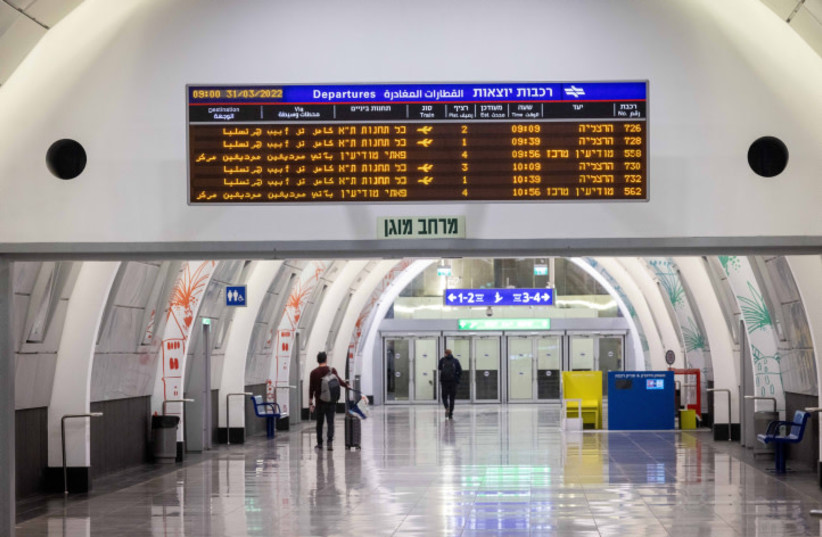It seems that whichever direction you turn these days in Jerusalem, your line of vision will be struck with cranes rising high into the sky. Construction is everywhere. Whether new buildings are being built on previously empty land or old buildings are being torn down and rebuilt anew, the ongoing construction is a sign of the non-stop, aggressive plans to modernize this ancient city.
In this new series of articles, we will look at Jerusalem’s continuous construction attempts, through real estate and public projects such as plans for the capital’s future public transportation network. We will take a deep dive into some of Jerusalem’s ongoing real estate projects and will also look at how traffic is affected by construction, as well as international events or diplomatic visits – to keep you updated on those areas to avoid and when.
Jerusalem: A transforming city
Jerusalem is a city with a rich history that dates back thousands of years. Steeped in religious and cultural significance, the city is not only a spiritual hub but has also become a focal point for modern development. Over the past few years, Jerusalem has been undergoing a construction boom that is reshaping its skyline and urban landscape, with a surge in real estate projects. However, with progress comes challenges, and one of the most pressing issues facing the city is the impact of this construction surge on its already bustling traffic.
As cranes dot the skyline, it’s evident that Jerusalem is experiencing a period of rapid growth and development. New residential complexes, commercial spaces, and infrastructure projects are transforming Jerusalem, attracting both local and international investors. The surge in real estate projects reflects a commitment to modernizing the capital’s infrastructure and meeting the demands of a growing population. However, the ambitious development comes at a cost, and one of the most tangible consequences is the strain placed on its traffic arteries.
Jerusalem, with its narrow, winding streets and ancient architecture, was not designed to accommodate the traffic demands of a bustling modern city. The building boom has exacerbated the existing traffic challenges, leading to congestion, delays, and frustrated commuters. As roads are closed or narrowed to facilitate construction projects, the limited alternative routes are often overwhelmed by the increasing number of vehicles navigating through the city.

The traffic effects are not limited to inconvenience alone; they also have broader implications for the city’s economy and quality of life. Businesses located along major construction routes may suffer a decline in foot traffic, impacting their revenue and forcing some to consider relocation. Residents, too, find themselves spending more time stuck in traffic, leading to increased stress and a decrease in overall well-being. Jerusalem’s cultural and historical sites, major draws for tourists, are also affected, as visitors face challenges in reaching these destinations.
City planners and officials are not oblivious to these issues and are actively working to find solutions. Strategic planning, rerouting of traffic, and the implementation of alternative transportation options are being explored to ease the burden on commuters. Additionally, efforts are underway to synchronize construction schedules to minimize disruptions during peak traffic hours and important events.
DESPITE THE temporary inconveniences, there is optimism that the construction boom will ultimately bring about a more vibrant and dynamic Jerusalem. New infrastructure, modern amenities, and improved living spaces contribute to the city’s overall growth and attractiveness. The real estate surge is not just about erecting buildings but represents a commitment to elevating living standards for Jerusalemites and ensuring that the city remains a relevant and thriving metropolis.
This building surge reflects a delicate balance between preserving the city’s historical significance and embracing the need for modernization. The challenge lies in ensuring that progress does not come at the expense of the capital’s unique character and its residents’ well-being. As the construction dust settles, Jerusalem is poised to emerge as a city that seamlessly blends the old with the new, creating a harmonious coexistence between its rich history and a contemporary society’s demands.
While the construction and real estate boom is reshaping the capital for the better, the impact on traffic cannot be ignored. With strategic planning and community engagement, Jerusalem has the potential to overcome these obstacles and emerge as a modern, thriving city that continues to captivate the world. ■
What's new in In Jerusalem?
- This week in Jerusalem: For your health
- A guide to Jerusalem real estate, construction boom, and traffic
- How Mayor Moshe Lion is transforming Jerusalem and preserving stability
- October 7 massacre survivor displays artwork in new exhibit
- Jerusalem's Rehavia neighborhood: A tapestry of culture, timeless landmarks
- Lori Palatnik: Giving newlywed IDF soldiers hope and a home to return to
- Eser: A restaurant where the vibes are as good as the food - review
- Grapevine: Celebrating Walter
- Jerusalem highlights January 12-18
